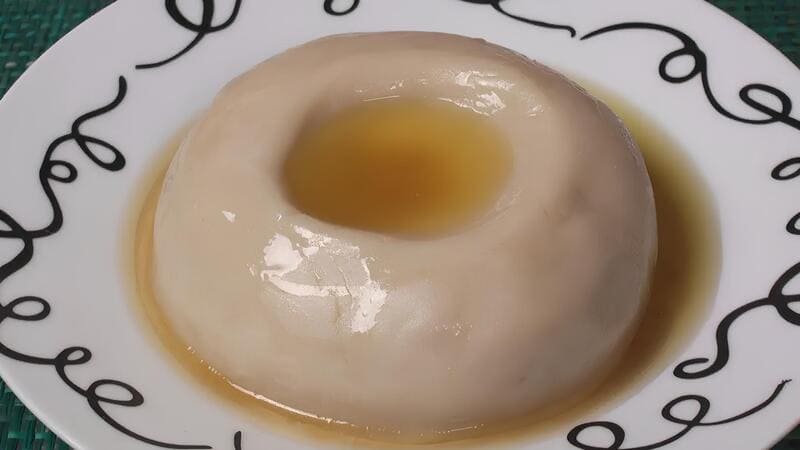
Asida, also known as Aseeda, is a traditional dessert that’s treasured across various cultures including Libya, Sudan, and Yemen. This hearty dish is particularly famous for its warming properties, making it an ideal choice during colder months. The primary ingredients—dates and wheat flour—impart a natural sweetness and rich flavor, embodying the essence of Middle Eastern cuisine.
In Egypt, Asida holds a special cultural significance, often associated with celebrations and religious holidays. The dessert’s dense, soft texture combined with the caramelized sweetness of dates creates a delightful sensory experience. Let’s explore how to prepare this delicious and fulfilling dish at home.
Ingredients
- 600 g soft dates (preferably Safawi dates)
- 7 cups boiling water
- 2 1/2 cups wheat flour, sifted
- 1 tbsp Haidwan (optional)
- 1 tbsp sesame oil (optional)
- Sugar or honey (optional, for serving)
Preparation
- Wash the dates well and remove the kernels.
- Soak the dates in 6 cups of boiling water for an hour to soften them.
- Mash the softened dates and filter out the lumps to obtain date juice. Gradually add the seventh cup of water during filtration.
- Bring the date juice to a boil over very low heat, stirring occasionally to prevent burning.
- Reserve 6 scoops of the boiled date juice for later use.
- Mix the sifted wheat flour with Haidwan.
- Gradually add the flour mixture to the boiling date juice while continuously kneading to prevent clumping. Cook for 10 minutes.
- Stir in the reserved date juice and continue kneading for an additional 10 minutes.
- Cover the mixture for 5 minutes, then stir again for 10 minutes.
- Alternate between adding date juice and cooking for 1 to 1.5 hours, ensuring a smooth, lump-free texture.
- Once the porridge reaches the desired consistency, add sesame oil if desired, and mix well.
- Serve the Asida warm, garnished with sesame oil, sugar, or honey according to preference.
Did you know?
Asida, or Aseeda, enjoys a rich historical tapestry and is a staple in various festive occasions and daily meals across different regions. In Libya and Sudan, it is often consumed in a more savory form with meat or tomato sauce, reflecting its versatility as both a dessert and a main course.
Meanwhile, in Yemen, Asida has deep roots in cultural traditions, especially during Ramadan and Eid celebrations. The use of Haidwan, a spice native to the deserts of Hadramout, adds a unique aroma and a touch of authenticity to the dish, while also enhancing its appeal with a darker hue and subtle warmth.
In Egypt, Asida is not just a treat for the taste buds but also a symbol of hospitality and tradition. When garnished with honey or sugar, it appeals differently, offering a dessert that’s at once sweet and nutritious. This dynamic nature of Asida has made it a beloved comfort food in homes across the Middle East and North Africa, keeping age-old culinary traditions alive.
